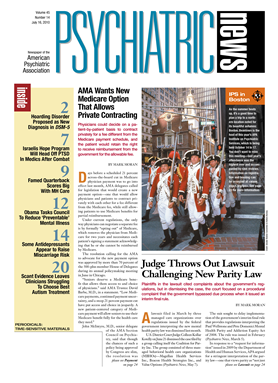Like most human behaviors, saving and collecting possessions can range from being totally normal and adaptive to excessive or pathological. Hoarding and compulsive hoarding are some of the more commonly used terms to refer to an excessive and problematic form of collectionism. Hoarding is highly prevalent and, when severe, is associated with substantial functional disability and represents a great burden for the sufferers, their families, and society.
Hoarding can occur in the context of a variety of neurological and psychiatric conditions, such as dementia or schizophrenia, but available research findings indicate that hoarding also exists as a syndrome distinct from other disorders. It is generally considered difficult to treat.
In DSM-IV-TR, hoarding is listed as one of the diagnostic criteria for obsessive-compulsive personality disorder (OCPD). According to DSM-IV-TR, when hoarding is extreme, clinicians should consider a diagnosis of obsessive-compulsive disorder (OCD) and may diagnose both OCPD and OCD if the criteria for both are met. It is clear that, in some cases, hoarding can be a symptom of OCD. For example, hoarding secondary to aggressive or contamination obsessions (for example, fear of contaminating/harming others if “contaminated” possessions are discarded), superstitious thoughts (for example, unreasonable belief that throwing something away will result in a catastrophe of some kind), or feelings of incompleteness or “not just right” (for example, the need to keep things to preserve all life experiences or the loss of one's identity, or to keep objects in a pristine state).
However, recent research has shown that in most cases hoarding appears to be independent from other neurological and psychiatric disorders, including OCD. These individuals do not experience intrusive thoughts, images, or impulses (that is, obsessions) or repetitive behaviors (that is, compulsions) as defined in the current classification systems and required for a diagnosis of OCD. This means that a large proportion of sufferers may remain undiagnosed and thus not receive adequate treatment. A relevant case that has recently come to our attention provides an example: A severe hoarder who, because of her hoarding behavior, lost custody of her child and may face eviction from her home and even imprisonment (on neglect charges) and whose psychiatric report concluded that she did not have any mental disorder.
The DSM-5 Obsessive-Compulsive Spectrum Sub-Work Group of the Anxiety, Obsessive-Compulsive Spectrum, Posttraumatic, and Dissociative Disorders Work Group is proposing the creation of a new diagnosis in DSM-5 named “hoarding disorder.” This proposed diagnosis would apply to hoarding that occurs in the absence of, or independently from, other organic or mental disorders.
To meet the currently proposed diagnostic criteria, the person needs to experience persistent difficulties with discarding or parting with possessions, accumulate large amounts of clutter that impede the normal use of their living areas, and experience marked distress and interference in activities of daily living. Furthermore, in the customary hierarchical diagnostic approach of
DSM, the clinician needs to rule out any possible organic (for example, brain injury) or other psychiatric disorders (for example, OCD, dementia, psychosis, autism) that could better explain the hoarding behavior. The provisional diagnostic criteria for hoarding disorder are listed at <
www.dsm5.org/ProposedRevisions/Pages/proposedrevision.aspx?rid=398>. They were developed based on criteria that had already been widely adopted by the field.
We hope that the addition of this diagnosis in DSM-5 will increase public awareness, improve identification of cases, and stimulate both research and the development of specific treatments for this problem.
So far, the Obsessive-Compulsive Spectrum Sub-Work Group has received largely positive responses from both professionals and the public regarding the inclusion of hoarding disorder in the nomenclature. Their suggestions have already led to improvements in the wording of the criteria.
It's important to emphasize two things. First, the proposed diagnostic criteria for hoarding disorder are not final. They may change based on additional data that become available, secondary data analyses of existing datasets, the results from a survey of clinicians, data from the DSM-5 field trials, and further input from the field.
Second, it is not yet known whether hoarding disorder will be included as an official disorder in DSM-5 or be added to the Appendix of Criteria Sets Provided for Further Study. It appears that most experts support its inclusion as an official disorder in DSM-5, but the work group awaits further guidance from the DSM-5 Task Force regarding this issue.
The Obsessive-Compulsive Spectrum Sub-Work Group is now conducting a survey among OCD/hoarding experts and other clinicians to test the reliability, validity, and acceptability of the new criteria using clinical vignettes describing a variety of clinical presentations that involve pathological hoarding. Participation is open to interested mental health professionals by following this link: <
www.surveygizmo.com/s/294620/hoarding-survey-apa>.
Several people inquired on <
www.dsm5.org> about animal hoarding and squalor, which are not directly mentioned in the proposed criteria for hoarding disorder. In response to these comments, the sub-work group has commissioned a literature review on these topics, which will inform whether mentioning these issues in the text accompanying the criteria (as opposed to mentioning them in the criteria set) will be sufficient. The Obsessive-Compulsive Spectrum Sub-Work Group will continue to examine issues such as these that have been put forward by professionals and the wider public.

